Data Products
Below you will find information of the pixel data products that will be produced by the LSST software stack. As well, you will find information on the potential added value user-generared products the SSSC is planning as well as the data products to be provided by the LSST project calculated via the LSST stack.
How Rubin Observatory Approaches LSST Solar System Processing Data Products
The goal is to provide products to the community that enable science in four guiding science themes; making a census of the Solar System is one of the four. LSST project therefore design products that are:
- Broadly useful for delivering unique LSST-enabled science
- Capture aspects that the LSST team is uniquely position to deliver
Key LSST Project Deliverables for Solar System Science
- Within 60 seconds of each observation: A real-time stream of observation reports (alerts) with information about astrometry, photometry, and shape including trailing, direction of motion.
- Every day: A stream of linked tracks reported to the Minor Planet Center (MPC).
- Every day: A catalog of orbits for LSST-discovered objects.
- Annually: Precisely calibrated photometric catalog (ugrizy bands) accurate to 5 mmag (systematics limited), with every data release.
- Where in the sky LSST is expected the next night will be accessible via an API/software routine. One can estimate for new Solar System discoveries whether LSST will be able to do self follow-up.
- SSSC members are working on a dedicated code to identify nightly tracklets from streaks and submit those to the MPC.
**The observatory code assigned by the MPC for the Simonyi Survey Telescope at Rubin Observatory (the main 8.4m telescope). The code is X05 and is further details are available in the MPC's observatory codes list .**
A short overview of Rubin LSST Solar System data products can be found here . The Data Products Definition Document (DPDD) defines what the nightly and yearly catalogs will contain. You can find a handy outline of the proposed database schema for the LSST SSObject table here . More information on the Rubin Observatory's Solar System Data Processing can be found here .
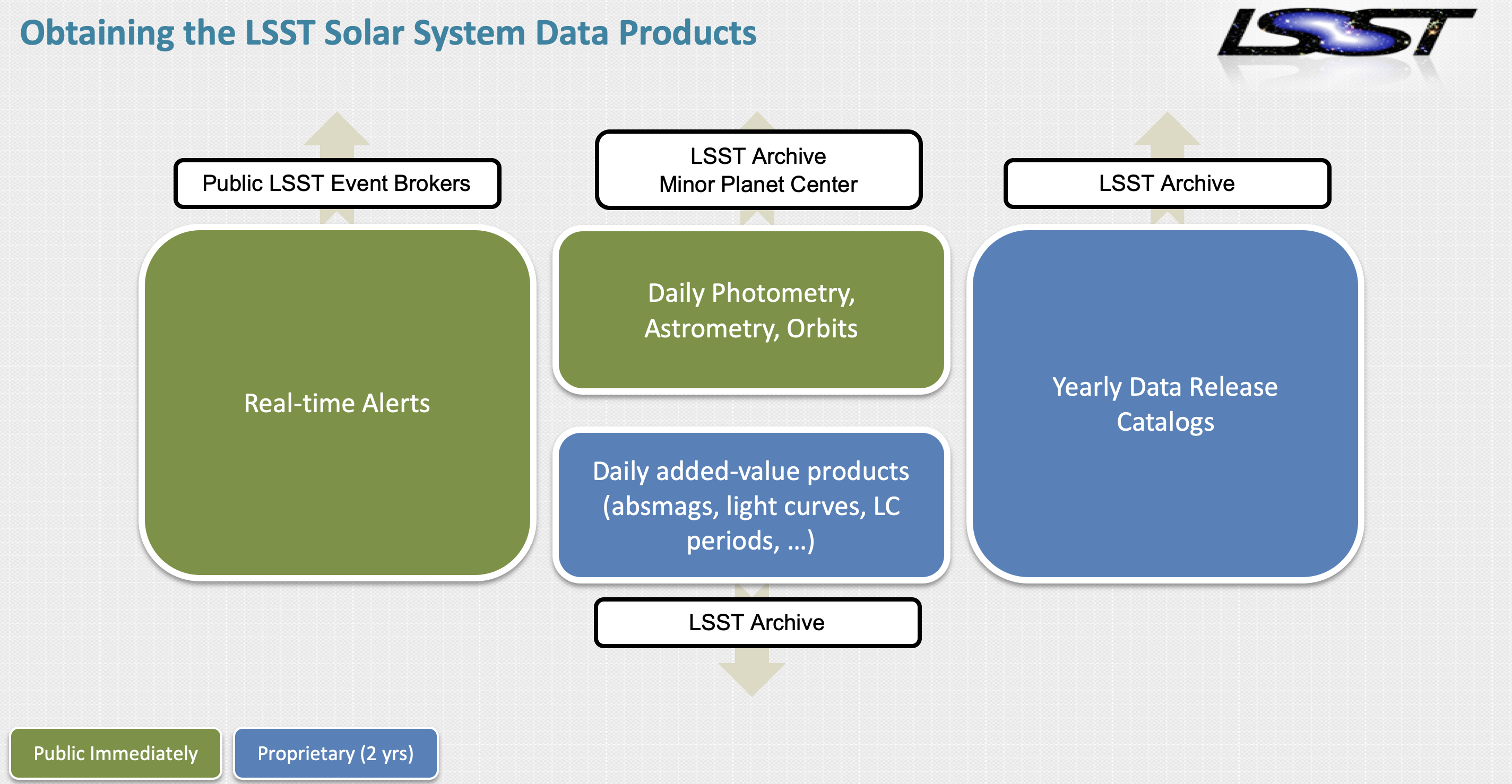
Image Credit: Rubin Observatory Data Management/Mario Jurić
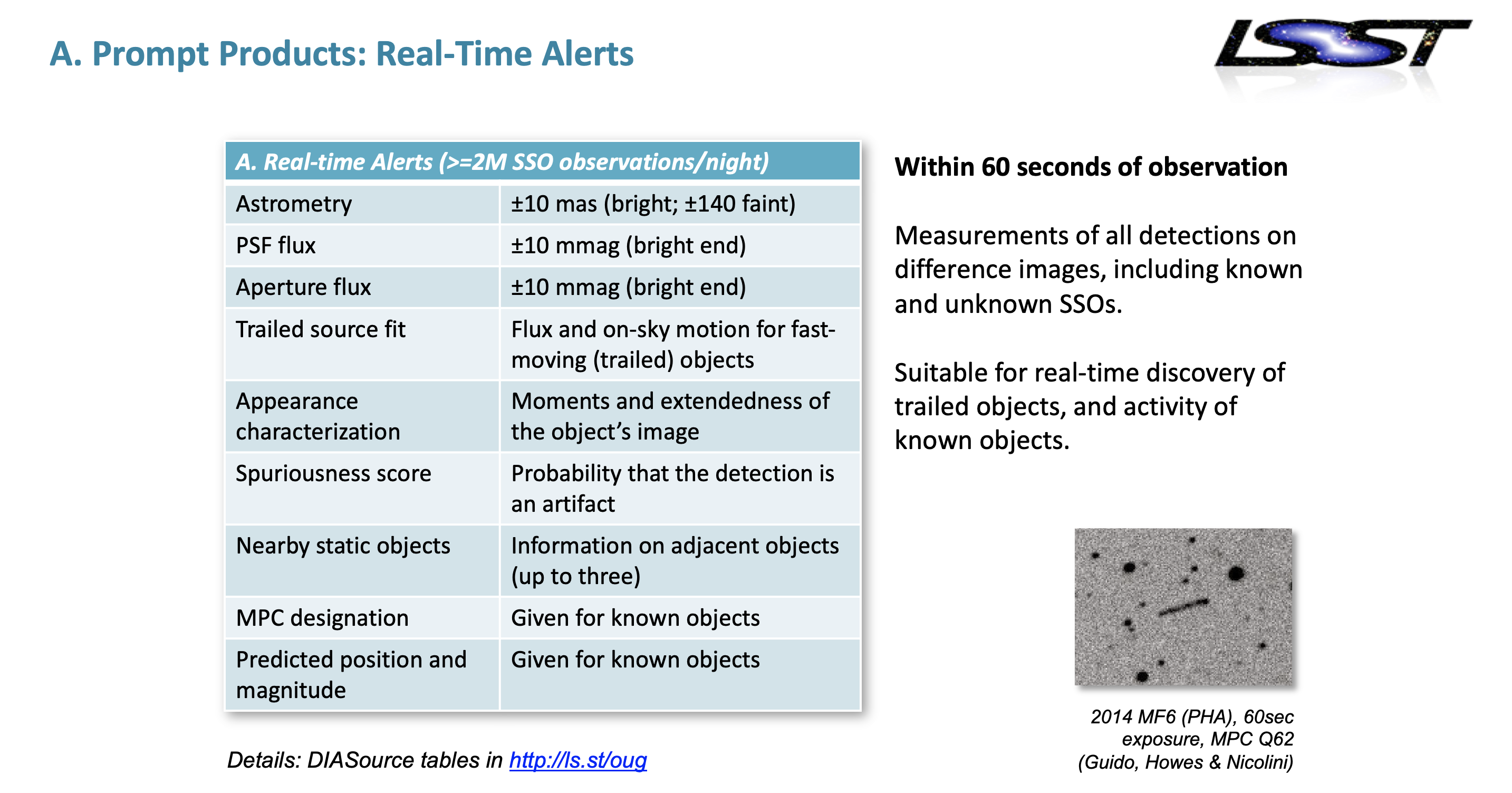
Image Credit: Rubin Observatory Data Management/Mario Jurić
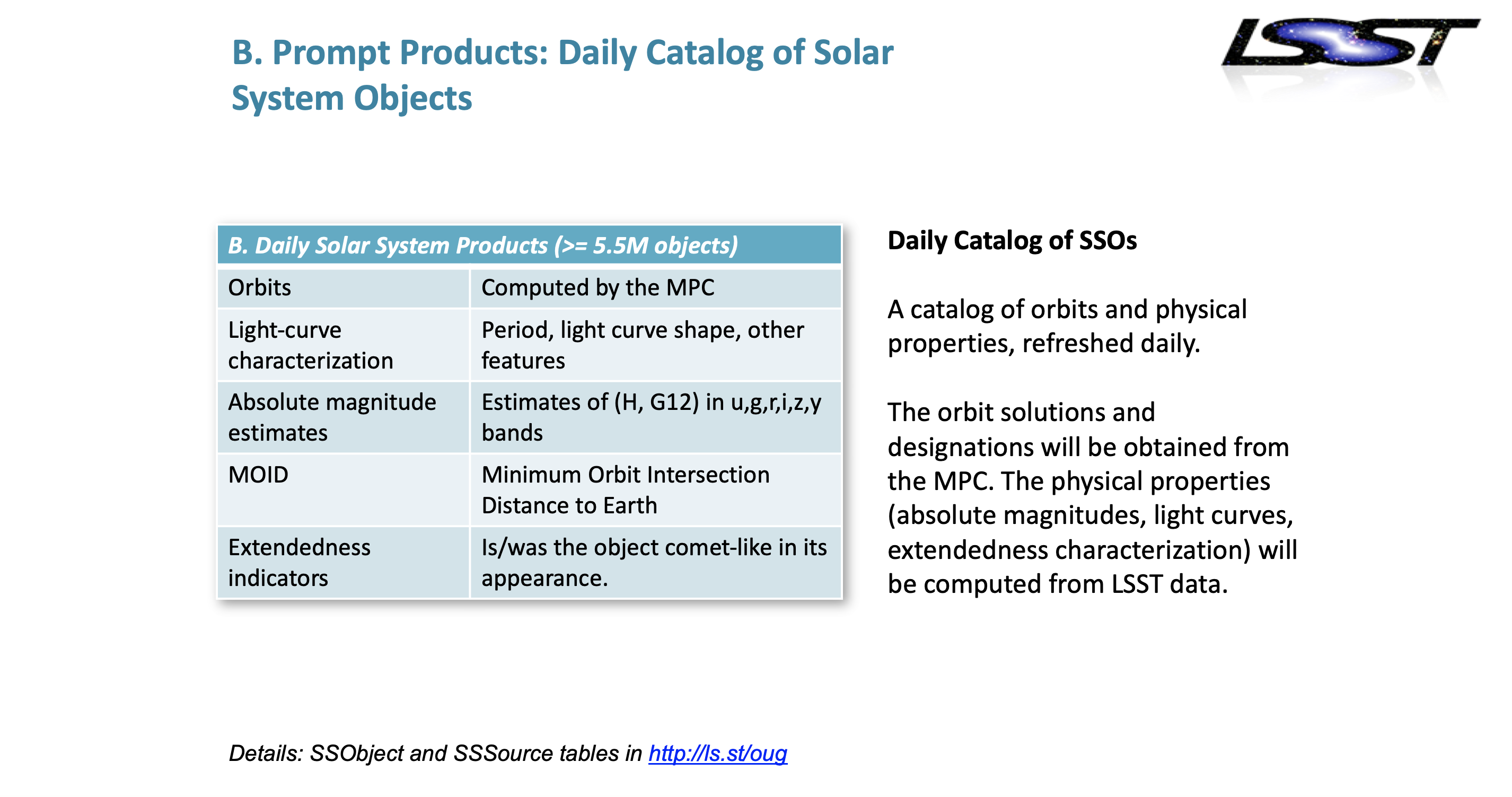
Image Credit: Rubin Observatory Data Management/Mario Jurić
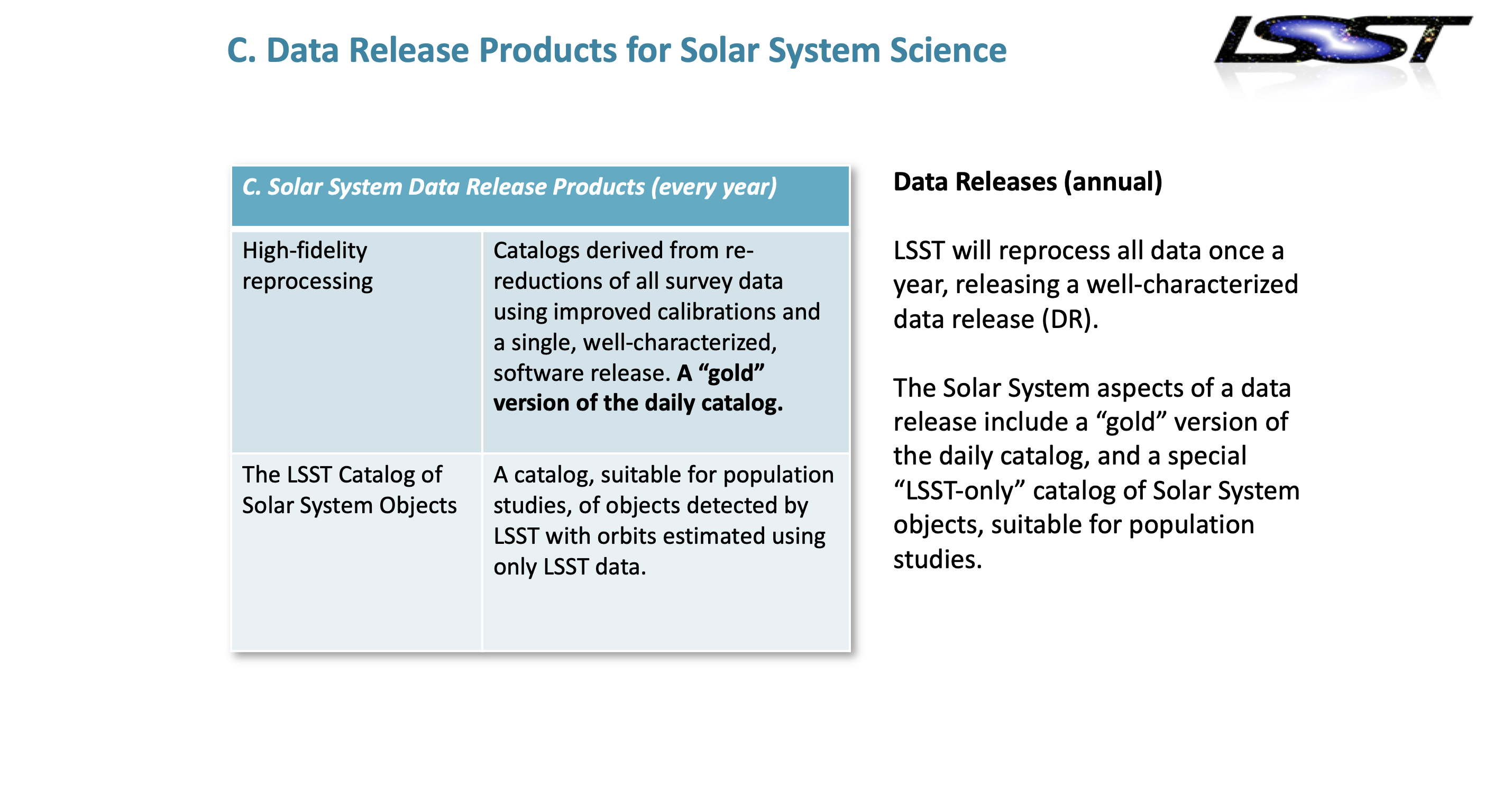
Image Credit: Rubin Observatory Data Management/Mario Jurić
LSST Project Data Product Levels
The LSST stack will produce data products at three levels, which are broadly defined below.Prompt data products produced on nightly or shorter timescales which will consist of basic images, source catalogs, transient identifications, moving object identifications, and event alerts.
Data Release annual data release products including refinements to calibrations and photometry, calibration images, image co-adds and catalogs.
User Generated/Added Value are user-generated added value products.
Exactly what parameters will be automatically provided within Prompt and Data Release products are still being discussed. You can learn more about the current status on planned Solar System Data Products from LSST in this recorded presentation by Mario Jurić. More information on all LSST data products can be found here.
Annual release will have all LSST observations run through one version of the LSST data pipelines. The version of software run on the nightly observations can change, and old observations won't be rerun through the updated pipelines until the annual release.
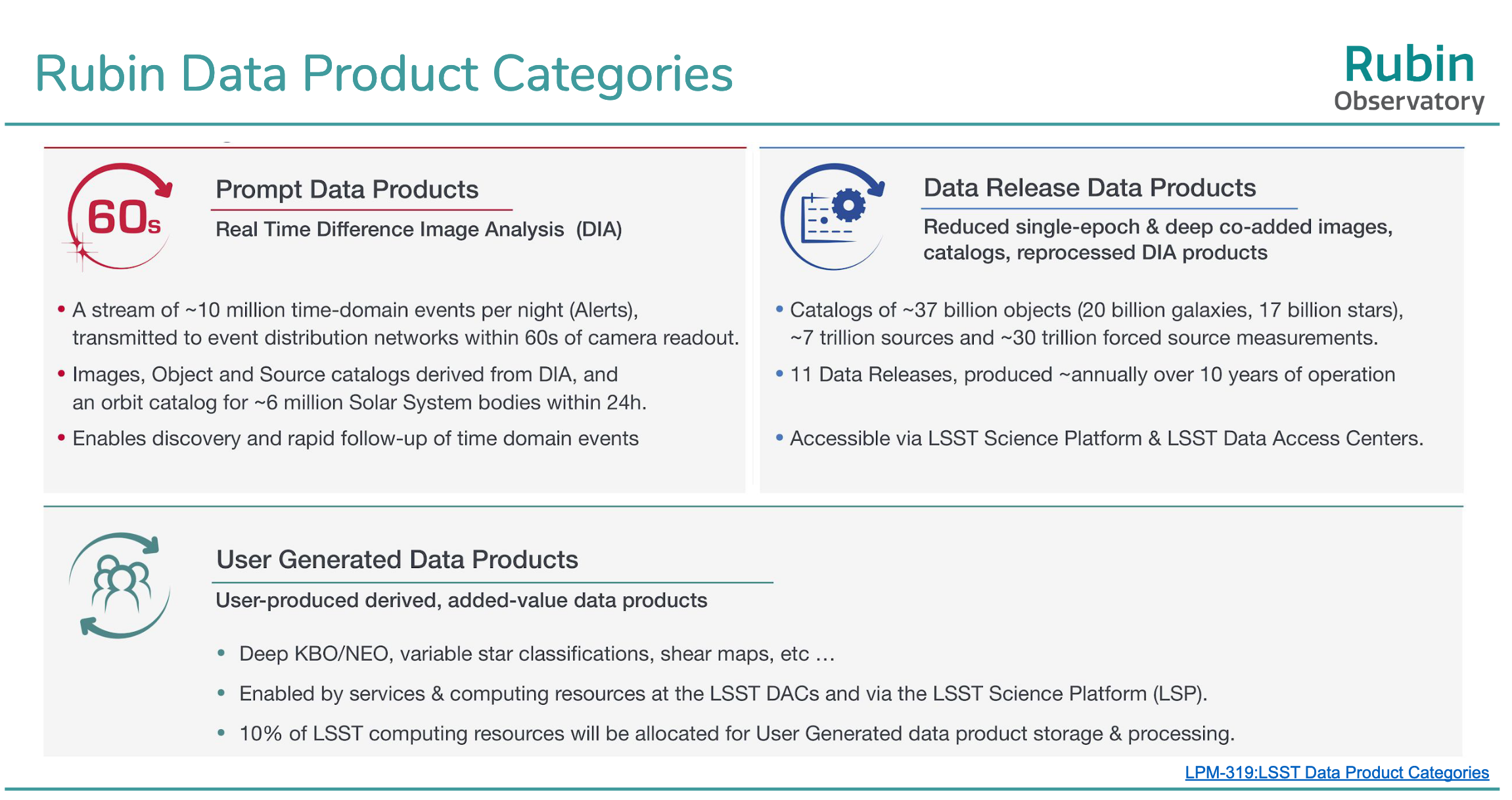
Image Credit: Rubin Observatory Data Management
Additional information on LSST data processing pipelines and data products can be found on the LSST Information for Scientists page.
The LSST Alert Stream
After an LSST image is taken, the image subtraction pipeline will identify transient sources (stuff that moves or varies in brightness). These Difference Image Analysis Sources (DIASources) will be sent out in the public LSST Alert Stream within 60s of the observation's end.
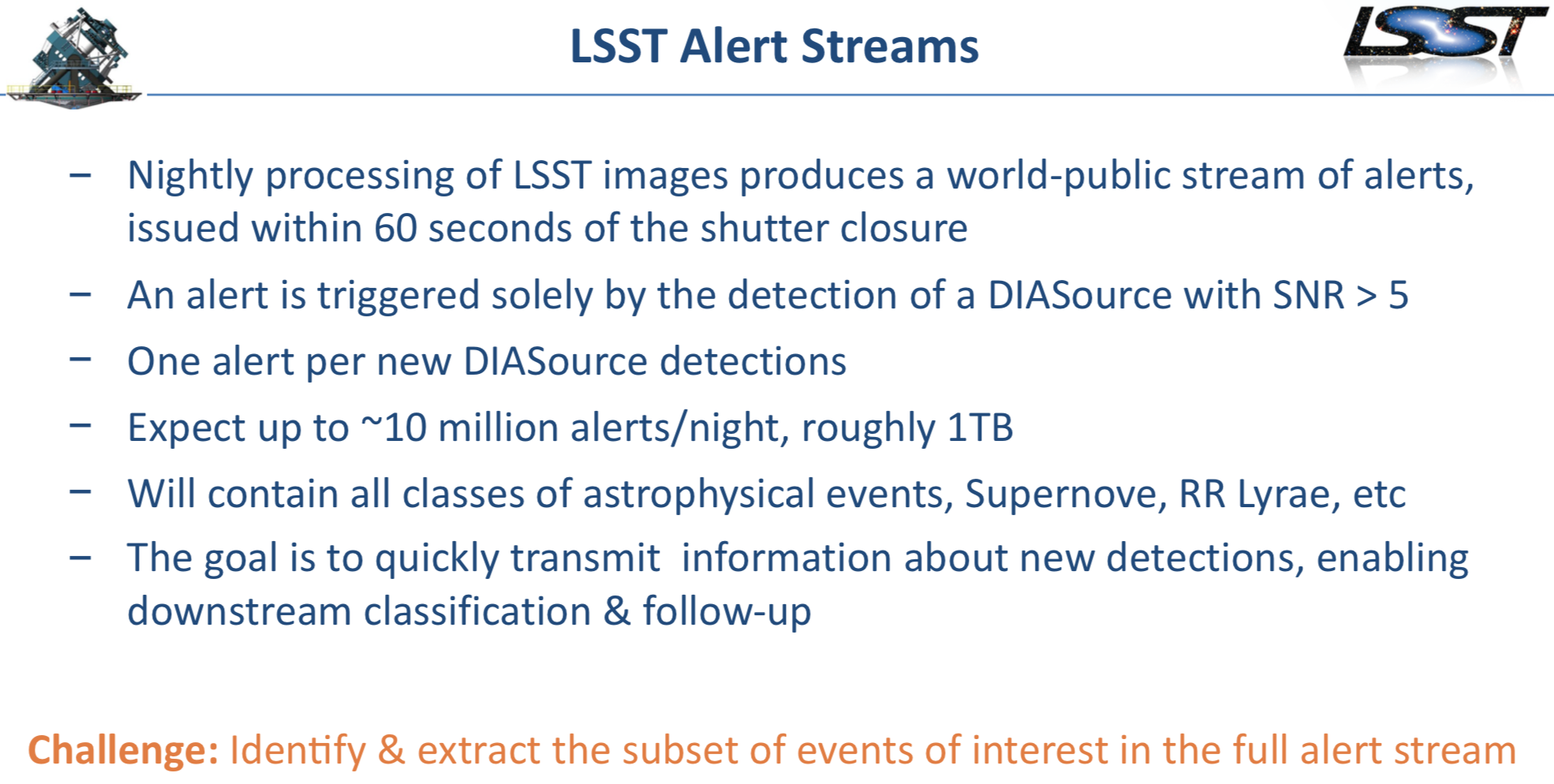
Image Credit: LSST Data Management/Leanne Guy
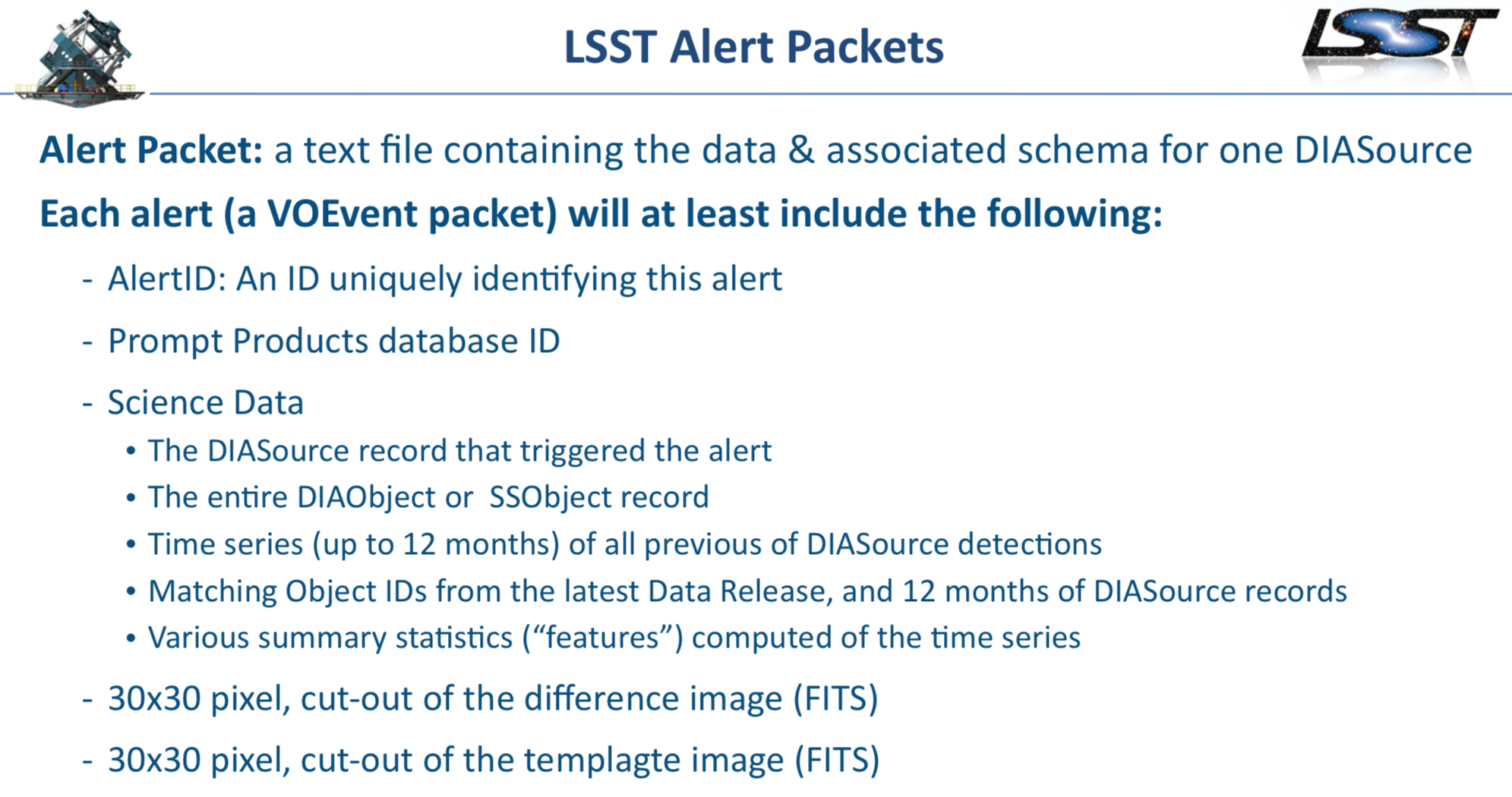
Image Credit: LSST Data Management/Leanne Guy

Image Credit: LSST Data Management/Leanne Guy
More about the alert stream can be found in this talk by Eric Bellm, this talk by Leanne Guy at the 2018 LSST Solar System Readiness Sprint, and the LSST Data Management Science Pipelines Design Document .
An overview of Plans and Policies for LSST Alert Distribution can be found here .
Rubin Data Products Abridged September 2022
Slides from this presentation can be cited and found here .
DP0.3 Simulated Rubin Solar System Data Products
On the Rubin Science Platform (RSP), LSST data rights holders can test software and database queries with DP0.3, simulated Rubin Solar System Data Products. The RSP has both a jupyter notebook environment, a data portal environment, and API programmatic access. DP0.3 was generated by members of the Rubin Solar System Pipelines and Commissioning teams, with help from the SSSC. Further details on DP 0.3 including tutorials and getting access to the RSP, can be found here.
Early Science and Year One Data Products
"Early Science is defined as any science enabled by Rubin for its community through and including the first data release, Data Release 1 (DR1)." - Leanne Guy Rubin Observatory Data Management Scientist and Interim AD for System Performance.
Rubin Observatory has released the Rubin Observatory Plans for an Early Science Program document. This is a living doocumentation outlining the plan for commissioning observations, draft plans for Year 1 science operations, and plans for alert production in the first year of LSST. A summary presentation of the contents of this document was presented in October 2022 and available online here.
Do consider submitting your prediction papers and papers describing your software tools to our AAS Journals Focus Issues .
Proposed Rubin-Euclid Joint Data Products
There is on-going discussion about some joint Rubin-Euclid data products, including Solar System data products, that would be available to both surveys' data rights holder. A document with initial recommendations from the joint Rubin-Euclid working group is available here.Expected Advanced LSST/User Generated Data Products Useful for Solar System Science
Proposed SSSC Generated Solar System-Specific Data Products
More information of proposed SSSC user-generated data products and software can be found in our software roadmap , published in the Research Notes of the American Astronomical Society.